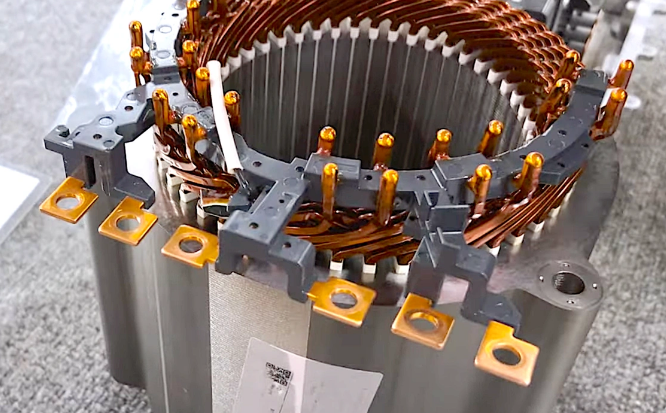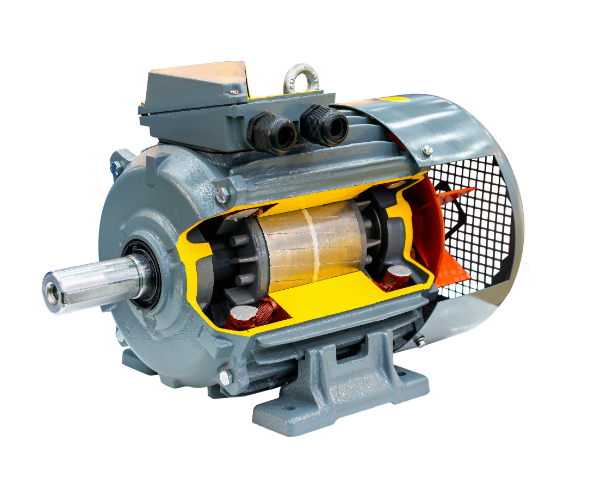As far as the advantages of three-phase motors are concerned, it is their high efficiency and, what is very important in agriculture, lower energy consumption. They are 20%-30% more efficient than single-phase motors. Three-phase motors typically achieve an efficiency level of IE3 or IE4, according to the International Electrotechnical Commission (IEC). The use of three-phase motors in large greenhouses may result in annual savings of up to 15% on all electricity bills. These translate to savings of 1,500 yuan when you consume 20,000 kilowatt-hours a year. In addition, the high starting torque of three-phase motors and stable operation make equipment reliable, improve operating efficiency and reduce maintenance costs in agricultural production.
High Efficiency and Energy Savings
Three-phase motors have 20%-30% higher efficiency than single-phase ones. They usually have an efficiency of IE3 or IE4 according to IEC standards, which implies that in terms of energy consumption, a three-phase actuation motor ultimately cuts with equal capacity. For farmers, the cost of electricity is one of their larger expenditures, especially in large-scale commercial operations.
Connectors with three-phase motors can lead to significant cost savings. In a large greenhouse that uses 20,000 kilowatt-hours per year, the use of three-phase motors can reduce electricity costs by as much as 15%, resulting in a potential annual saving of 3,000 kilowatt-hours. When calculated at half a yuan per degree, this translates to a substantial saving of 1500 yuan each year. This optimistic outlook can motivate farmers to adopt this technology and reinvest the savings in other aspects of agriculture.
Three-phase motors have high efficiency as well which in turn helps to reduce CO2 emissions and contributes to sustainable development. With the economic development, agriculture in the ecological environment is deteriorating day by day, but with higher quality and efficiency of wheel farm tractor equipment, it can minimize production costs at the same time, protect the ecology.
Stable Power Output
The smooth and stable current output characterizes the three-phase motors. The design reduces vibrations and noise coming from the equipment, thus enlarging the workability and comfort. With a three-phase motor, which is much quieter for crops that are more sensitive to noise (flower and fruit tree cultivation), the harm plants would suffer has been dramatically decreased, and yields improved quality enormously.
And with the power output remaining stable, their equipment also stays in good condition, reducing its breakdowns and providing some extra life. Industry data establishes that the Three-Phase motors saw a failure rate of 1%-2%, while Single-phases reached 5%-10%. Thus, equipment that uses three-phase motors needs less frequent maintenance work due to this, making it possible to save farmers both free time and resources and, as a result, enhance efficiency.
Three-phase motors enable pumps in certain irrigation systems to operate smoothly under large loads, reducing the undesirable effect of water supply fluctuations that can cause crop deficiencies. This efficiency ultimately leads to an improved harvest as a whole, making you more productive and successful in your agricultural endeavors.

Reliable Starting and Operation
Three-phase motors have a higher starting torque—between 1.5 and twice the rated torque—which allows them to meet the large-load startup requirements of agricultural machinery. When harvesting, there are many different types of resistances from soil and crop during harvest season; three-phase motors allow for the proper startup of machines to prevent economic losses due to failed starts.
Under operation, three-phase motors have high-speed stability. This is especially important on equipment such as irrigation pumps and conveyor belts to keep the irrigation water and material transport process moving. This stability improves not only the efficiency of work but also prevents the separation of parts, so components wear out less and last longer.
Three-phase motors can be used to control irrigation systems, cycle, and maintain water adequately so that the yields of crops increase in variety and amount, especially during dry seasons.
Lower Maintenance Costs
Three-phase motors are simple and built to last, with fewer moving parts than other types of electronic equipment. This means lower maintenance requirements over their life. The replacement rate of three-phase motor failure is about 1%-2% according to the market data; corresponding figures for single-phase motors are probably as high as 5%-10%. This makes it worth well for farmers in the long run to choose three-phase motors.
Maintenance costs for three-phase motors can, in some agricultural irrigation systems, be up to 30% less than those required by single-phase motors. In this way, it also benefits farmers by saving on maintenance costs and enabling them to focus more resources on primary food production and the implementation of new technologies. Besides, it can lower the labor for farmers so that they have more capacity to concentrate on the skills and technologies in agriculture.

Diverse Applications
Three-phase motors are used throughout farming applications, from greenhouse fan ventilation to grain drill pumps and irrigation systems. In addition to this, the diversity allows farmers to choose suitable products according to different production requirements selectively, improving operational flexibility and efficiency.
In greenhouses, ventilation systems with three-phase motors provide effective maintenance of the necessary temperature and air circulation, as well as prevent pests and diseases. There is an increase of 10% to 15% in productivity in data analysis between the two greenhouses when built around a three-phase motor and a single-phase motor. These applications increase the economic benefits to be obtained by farmers as well as great value for them.
Cultural and Environmental Impact
This has led both to an increase in the productivity of agriculture and more comfortable working conditions for farmers thanks to a sharp revival of three-phase motors. Stable machinery work reduces labor intensity for farmers; they can pay more attention to the technology and management of agriculture, which is beneficial as it raises production levels in all respects.
Another pro for sustainable agriculture is the high efficiency of three-phase motors. When energy consumption is reduced, it also minimizes environmental burdens, and economic benefits to the farmer increase while protecting ecological systems. This method of production is sustainable and provides the way forward for all future agricultural expansion.
The popularization of three-phase motors not only increases the income of farmers but also contributes to the development of agricultural technology, enabling more advanced production technology and management concepts for farmers and improving agricultural competitiveness.








